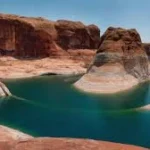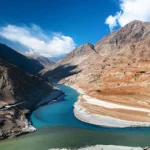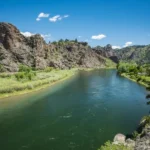
Quartz is a mineral found in the Earth’s outside layer. There are a wide range of quartz, some of which are viewed as gemstones. Quartz is utilized in an assortment of ways from making cut sculptures to making electronic parts. It is a gem with three-sided crystals.
Quartz is the second most common mineral in Earth’s continental crust.
Quartz has many different names which are dependent upon their color.
Its crystal structure is a framework of SiO4 silicon–oxygen tetrahedra.
Large quartz is mined in Brazil.
Each shares an oxygen atom oxygen with another tetrahedron, so the overall chemical formula is SiO2 or silica.
Quartz weighing 90,000 lbs. has been mined in Brazil.
Quartz is a component used to make quartz clocks.
One of the first uses of quartz, in the form of flint, was the production of sharp objects such as knife blades, scrapers, and projectile points such as the arrowheads.
Sand often has a lot of small quartz bits.
There are many uses for quartz because it can conduct electricity under pressure.
Quartz has a mineral hardness of 8.
Quartz is commonly used in spiritual practices.
The word “quartz” comes from the German word “quarz”.
Some people believe quartz has magical powers and has the ability to promote growth in a garden or to attract certain energies into the home.
‘Fused quartz’ is glass made of silica in non-crystalline form.
Quartz is made up of silicon and oxygen.
The properties of fused quartz are superior to those of other types of glass due to its purity.
Quartz is used to make the internal parts of watches.
It has electrical properties and heat resistance that make it valuable in electronic products.
Quartz is so abundant that almost every rock contains at least a small amount of it.
Refractory bricks are often made of quartz sand because of its high heat resistance.
Because quartz is clear, it is often used in the production of glass.
Quartz sand has a high resistance to being crushed.
Because it contains pure silicon, quartz is used to make many computer components.
Quartz sands are used for traction in the railroad and mining industries.
People in Ireland and other countries used quartz to make stone tools in prehistoric times.
One of the most amazing properties of quartz is the ability of its crystals to vibrate at a precise frequencies.
Quartz is often used in the fashion industry especially in jewelry making.
Today, billions of quartz crystals are used to make oscillators for watches, clocks, radios, televisions, electronic games, computers, cell phones, electronic meters, and GPS equipment.
Although variations of quartz come in many colors, pure quartz is clear.
“Silica stone” is an industrial term for materials such as quartzite, novaculite, and other microcrystalline quartz rocks.
Quartz FAQs:
Quartz is one of the most abundant minerals on Earth and takes many forms, both natural and man-made. Here are some of the most common questions people search about quartz, answered in detail:
1. What is quartz?
Quartz is a mineral composed of silicon dioxide (SiO2). It occurs naturally in a wide variety of geological formations and has a crystalline structure. Natural quartz can be transparent, white, gray, pink, purple, brown, or even black depending on impurities and inclusions.
2. What are the different types of quartz?
There are many varieties of quartz, each with its own unique characteristics. Here are a few common types:
- Rock crystal: The clearest and most transparent form of quartz, often used for gemstones and carvings.
- Amethyst: A purple variety of quartz, prized for its beauty and used in jewelry.
- Citrine: A yellow variety of quartz, sometimes called the “merchant’s stone” for its association with prosperity.
- Rose quartz: A pink variety of quartz, associated with love and relationships.
- Smoky quartz: A gray or brownish-black variety of quartz, believed to have grounding and protective properties.
- Chalcedony: A microcrystalline variety of quartz with a waxy luster, including agate, jasper, and carnelian.
- Quartzite: A metamorphic rock formed from sandstone where quartz grains have recrystallized.
3. What is engineered quartz?
Engineered quartz, also known as quartz composite or engineered stone, is a popular material used for countertops, flooring, and other applications. It is made from crushed quartz crystals, resin binders, pigments, and sometimes other materials. Engineered quartz offers several advantages over natural quartz, including:
- Greater durability and scratch resistance
- Wider variety of colors and patterns
- Non-porous and stain resistant
- Lower maintenance requirements
4. What is quartz sand used for?
Quartz sand, consisting of tiny grains of quartz, has numerous industrial applications. Here are some common uses:
- Glass production: The primary ingredient in most types of glass.
- Construction: Used in concrete, mortar, and sandblasting.
- Foundry industry: Used in molds for casting metals.
- Filtration: Used in water filters and other purification systems.
- Electronics: Used as a component in some electronic devices.
5. What are the properties of quartz?
Quartz has several key properties that make it a valuable mineral:
- Hardness: Quartz is a very hard mineral, ranking 7 on Mohs scale of mineral hardness (with diamond being 10, the hardest). This makes it resistant to scratching and wear.
- Chemical resistance: Quartz is highly resistant to weathering and chemical attack.
- Piezoelectric effect: Some types of quartz exhibit a piezoelectric effect, where they generate an electric current when pressure is applied. This property has applications in electronics and other technologies.
6. Is quartz a gemstone?
Yes, some varieties of quartz, such as amethyst, citrine, and rock crystal, are considered gemstones and are used in jewelry making. These varieties are typically cut and polished to enhance their beauty and brilliance.
7. How can you tell if something is quartz?
There are a few ways to identify quartz:
- Hardness: Try scratching the material with a steel knife. If the knife scratches easily, it’s unlikely to be quartz.
- Fracture: Quartz breaks with a conchoidal fracture, meaning it has smooth, curved edges when broken.
- Luster: Quartz has a vitreous luster, meaning it has a glassy shine.
However, for a definitive identification, it’s best to consult a geologist or gemologist.
8. Does quartz have healing properties?
Throughout history, different cultures have attributed various healing properties to quartz crystals. However, there is no scientific evidence to support these claims. The use of crystals for healing purposes falls under the realm of alternative medicine.
9. Where is quartz found?
Quartz is the most abundant mineral on Earth and can be found in almost every geological setting. It is a major component of granite, sandstone, and many other rock types. Quartz crystals can also be found in veins and cavities within rocks.
10. What are some interesting facts about quartz?
- Quartz is the second most abundant mineral in the Earth’s crust, after feldspar.
- The largest single crystal of quartz ever found weighed over 600 tons!
- Quartz is a piezoelectric material, meaning it can convert mechanical energy into electrical energy and vice versa. This property is used in various technologies, such as watches and microphones.
- Some varieties of quartz, like amethyst, can change color when exposed to sunlight.








